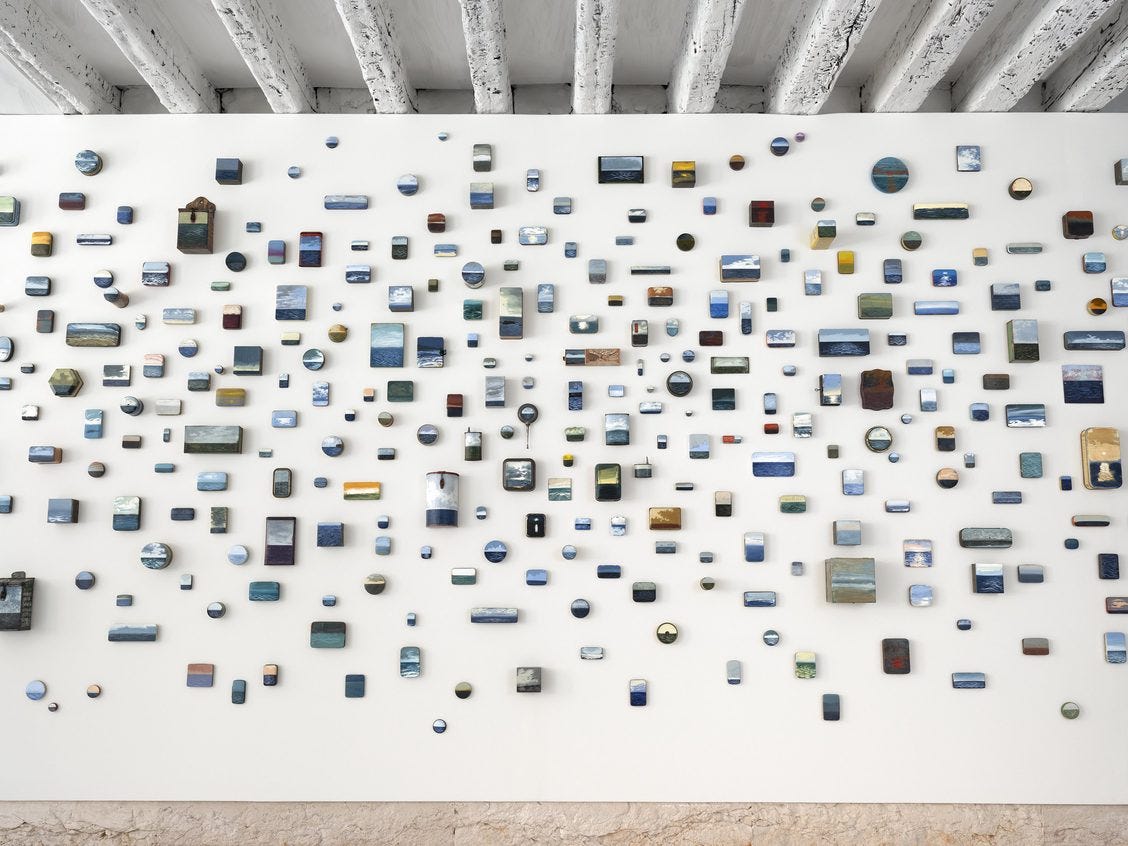ICE AND WATER
In early September, unprecedented rainfall left a third of Pakistan under water. The video clips of huge surges of brown water sweeping away bridges, houses and livelihoods demonstrated, again, that the climate emergency is happening right now and its worst effects are being felt by those who have done the least to contribute.
The sheer scale of the climate emergency makes it difficult to grasp. Sea level rise is particularly elusive as it is (so far at least) incremental and cumulative. It’s a slow encroachment rather than a sudden flood, driven by melting that is happening out of sight.
Raymond Besant filming in Greenland last year © Raymond Besant/BBC NHU 2021
Orkney-based wildlife cameraman Raymond Besant went to Greenland last summer to film blocks of ice breaking from the vast Store Glacier for the BBC’s recently aired documentary series Frozen Planet II. Although more used to filming animals, he wanted to show how warmer temperatures in the polar regions is melting Greenland's vast ice sheet.
Store Glacier, Greenland © Raymond Besant/BBC NHU 2021
In an interview for BBC news he shared his mixed feelings:
“At the glacier it is a very visual representation of what climate change looks like. It's quite an easy way to show that more ice is falling off and the glacier is calving at a faster rate because of climate change.
“But it is quite a conflicting feeling. You want the ice to fall off so you can film it, because a lot of effort has gone into you being there - but then you are witnessing climate change in action”.
But even the Greenland ice sheet feels far away. It can still be hard to grasp how its melting is already affecting us at a more local level. After all, the sea level changes with every tide and storm, indeed from moment to moment with every incoming wave. It’s hard to see that it’s already happening, right now, somewhere near you or somewhere you love.
Campsite at Store Glacier, Greenland © Raymond Besant/BBC NHU 2021
FROM GREENLAND TO VENICE
This is the impetus behind artist David Cass’s project “Where Once the Waters”. It’s a long-term project that he has been working on for some time. The results have been gathered and presented recently in Venice, a place that itself is extremely vulnerable to sea level rise. He has now also brought it all together in a beautifully produced book.
Where Once the Waters publication © David Cass, 2022
The project takes two forms. In one, Cass has been asking people from all over the world to participate by offering details of their date of birth and location. He responds by sending them a letter, typed using an old manual typewriter on re-used, often antique papers sourced from flea markets. These outline the calculation of sea level rise that has occurred at or near their birthplace, within their lifetimes, offering this information in plain, undramatic statements.
Where Once the Waters publication © David Cass, 2022
These terse little bits of information accumulate, millimetre by millimetre, dropping through letterboxes the world over. When you read them as a series in the pages of the book, or see them gathered in their hundreds in the Venice installation, they tell a global story that is vast in its implications yet personal in its impacts.
Where Once the Waters. Spring 2022: Venice Biennale, Italy © David Cass
Alongside these letters, Cass has been continuing his series of small-scale seascape paintings on objects also often found in fleamarkets: old storage tins, cigar or matchboxes, cotton reels, snuff boxes, the battered flotsam and jetsam of lives long since passed.
Where Once the Waters. Spring 2022: Venice Biennale, Italy © David Cass
Like hundreds of tiny keyholes through which we are invited to peer, the objects are beautiful, covetable, pocket-sized pieces of art that combine a romantic patina of age with deft brushwork and the repeated motif of the sea horizon. And yet the surface charm of these works belies their serious message – that sea horizon is shifting and we, each one of us, need to pay attention.
Where Once the Waters. Spring 2022: Venice Biennale, Italy © David Cass
By these means, Cass links the local, the small-scale, the personal, even pocket-sized, first to the coastline nearest our birthplace and then to the world’s oceans. This is a linking of temporal and geographical scales that we need to feel. We can’t think our way there. It comes in sudden, dizzy rushes of realisation and slips away again. But our personal connection with global forces is not just a game of perception. It’s deeply political.
Where Once the Waters. Spring 2022: Venice Biennale, Italy © David Cass
A DROP OF HOPE
The one piece of good news to come out of the COP27 meeting was the agreement to implement a ‘loss and damage’ fund to help those countries who are already being badly affected by climate change but who have done the least to contribute to it. This year’s flooding was the worst in Pakistan’s history. 33 Million people have been affected and over 2 million people made homeless. Yet Pakistan has contributed just 1% of global carbon emissions. The fund is a small step towards some kind of redistributive climate justice.
But agreement was only reached because of years of relentless pressure from civil society and grassroots campaigners. Their dogged persistence made it difficult for world leaders to walk away without looking like the ‘bad guy’.
This, I think, is a fragment of hope worth holding onto.
Climate change is cumulative, but so is political pressure. Each one of us may be just one more tiny drop. But drops accumulate. Drops are part of something bigger.
They’re part of an ocean.
Sam













